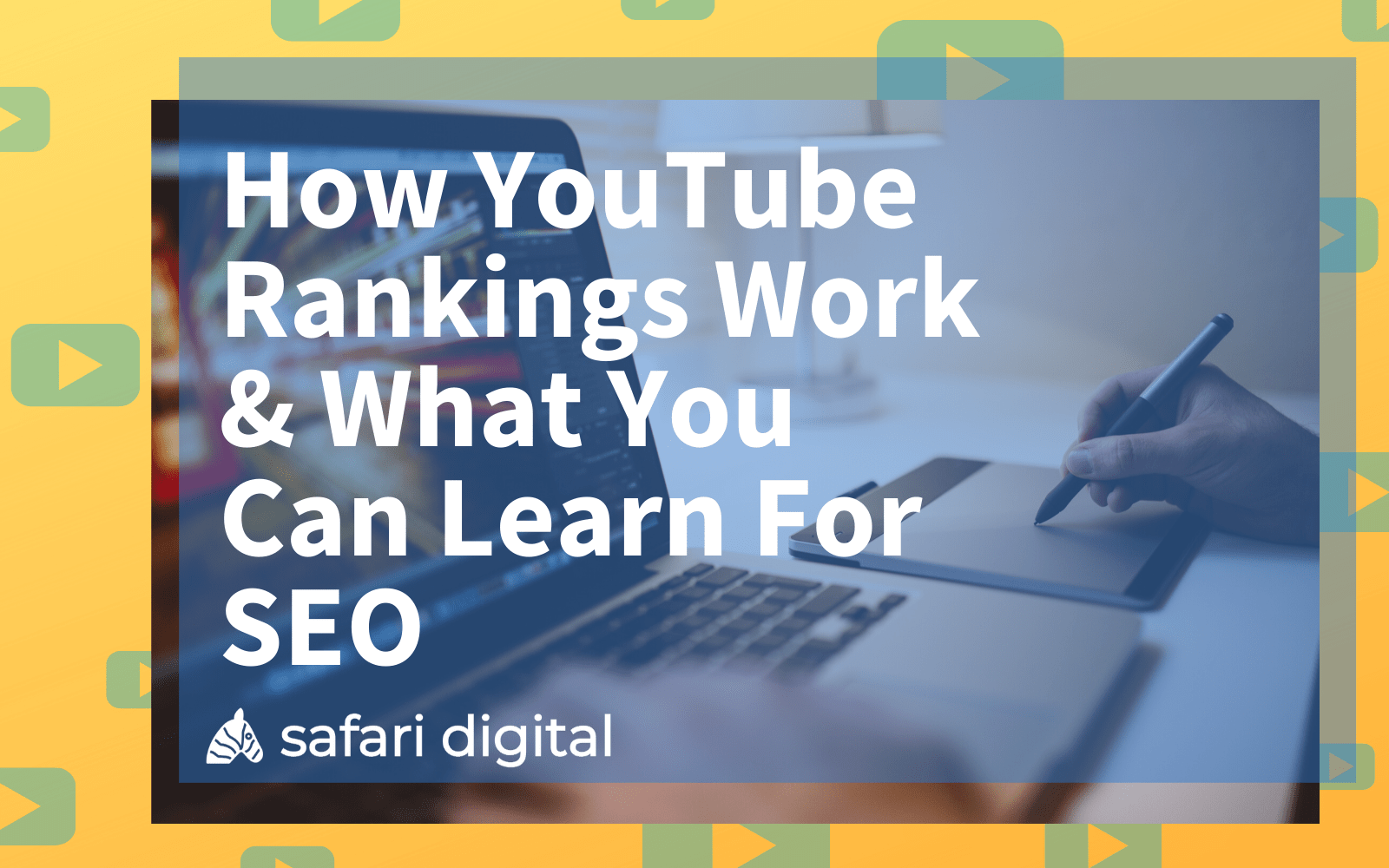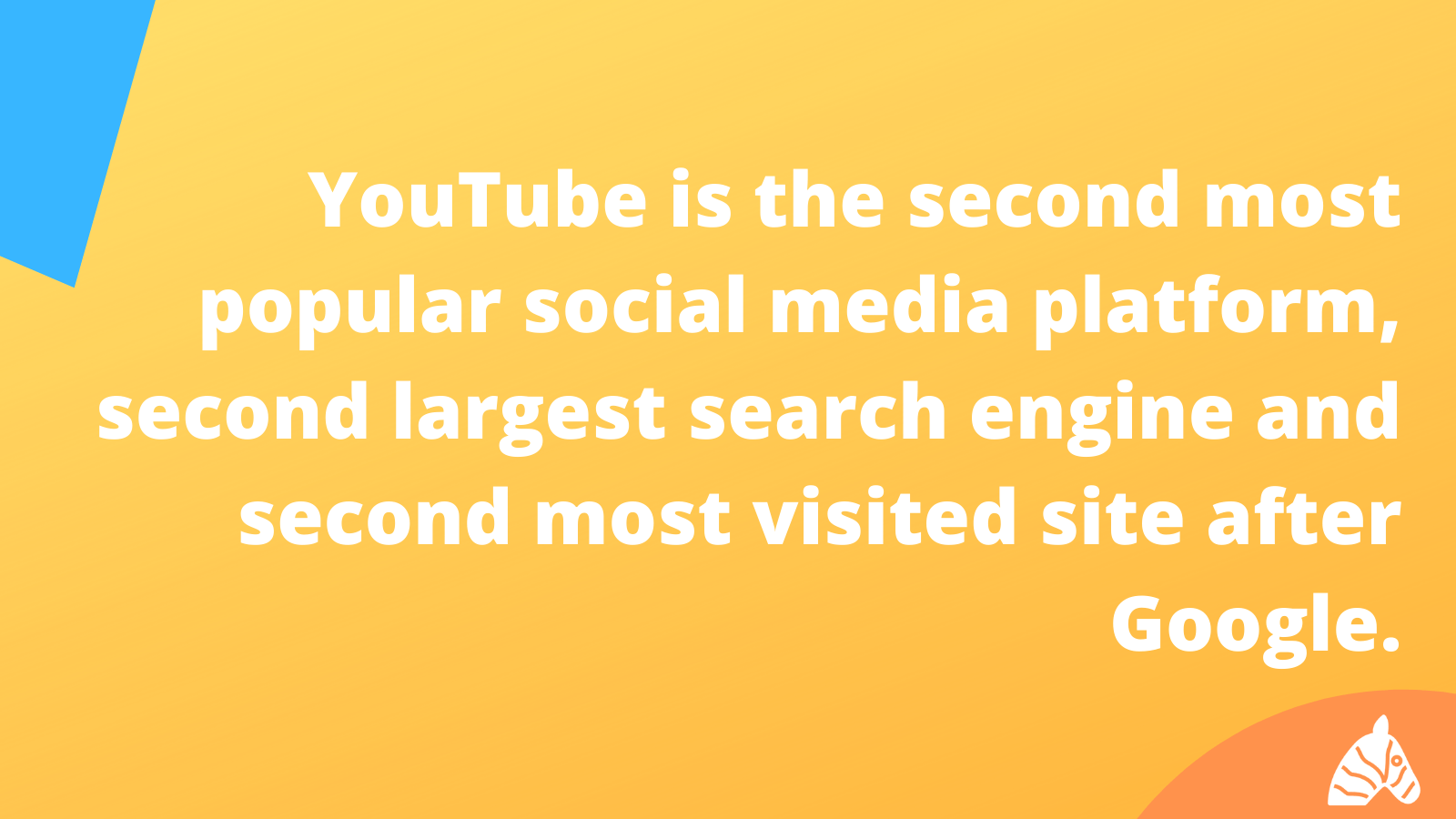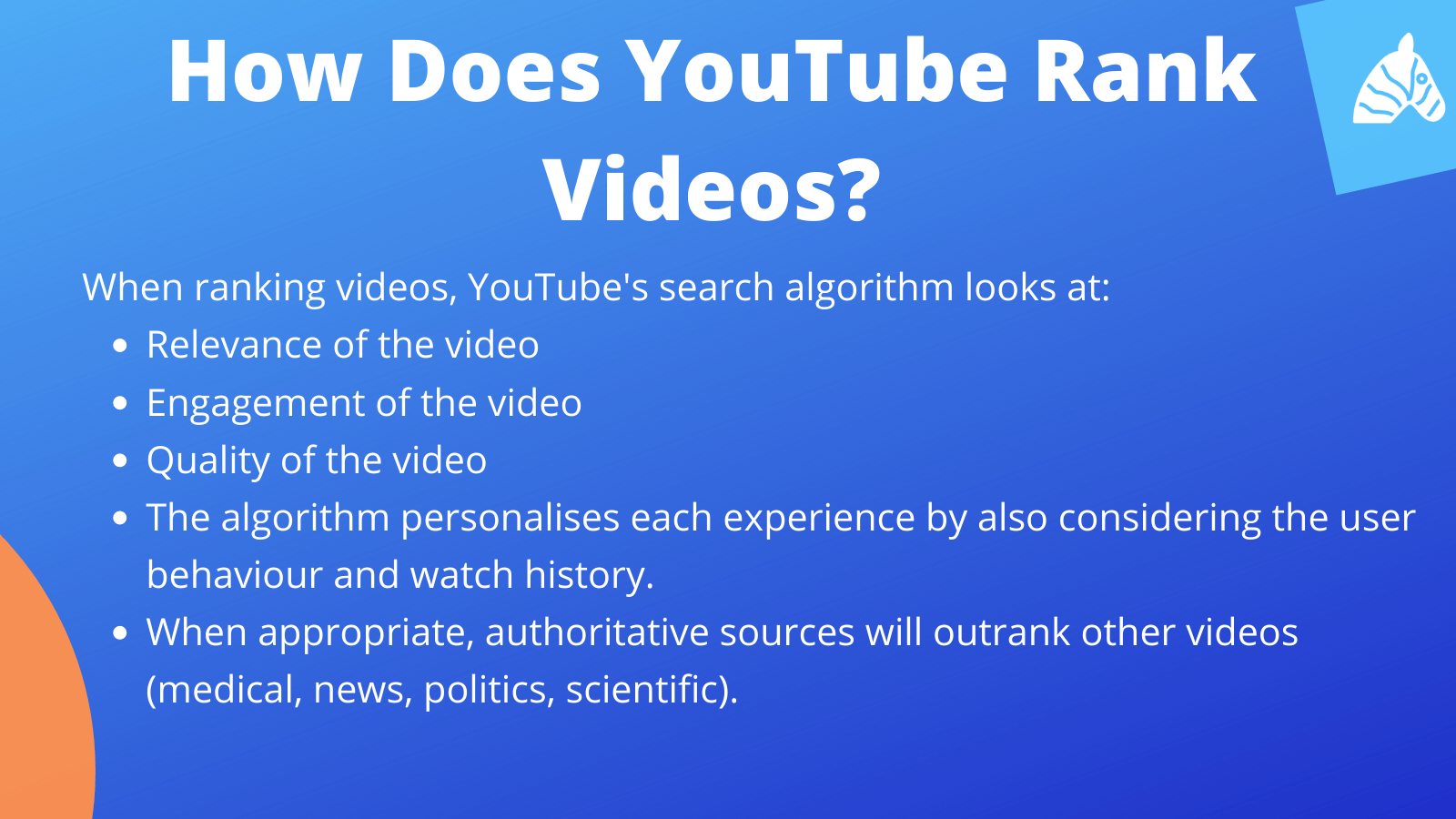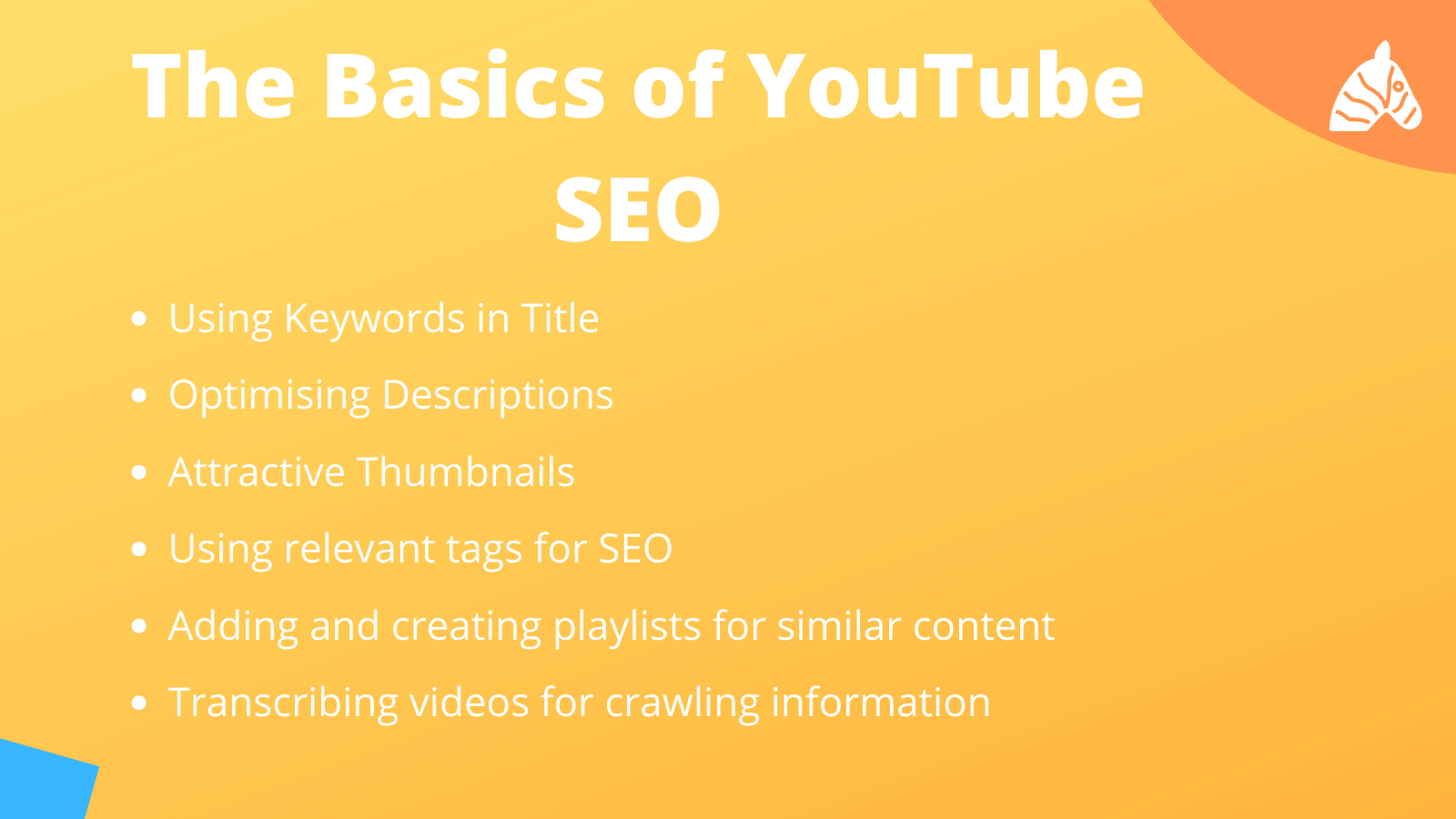
Youtube SEO Tips and Overview to help YouTubers and SEO professionals to make the most of their YouTube marketing efforts.
Looking to rank your videos on YouTube? Want to find out how YouTube SEO ties into general SEO? We look at the way that Google (Google acquired YouTube back in 2006 for $1.65B USD ICYMI) sorts and ranks new videos using the YouTube ranking algorithm and how these learnings can be applied to regular search engine optimisation.
YouTube is the single largest and most popular social media platform in the world. Every day, millions of viewers jump onto YouTube to learn, listen, and enjoy content created by others. Only second to Google, YouTube is also the second-largest search engine and the second most visited site online.
YouTube SEO has recently become an important topic of discussion. Every minute that passes, at least 500 hours of video are uploaded to YouTube. With so much content, the platform relies on a sophisticated algorithm to both rank and recommend videos to users. Its recommendation algorithm determines at least 70% of what users watch on YouTube. Developed by Google, YouTube’s algorithm plays an enormous role in the way people use, watch, and find content on YouTube; hence the increasing awareness of YouTube SEO.

In a bid to become more transparent and to offer an explanation as to how YouTube functions and where YouTube SEO comes in, Google created an entire website called ‘How YouTube Works’. The site breaks down how the algorithm operates, their policies, and how they plan to foster a responsible and accountable platform for content.
Google’s new resource has provided us with a broader understanding of YouTube SEO and the platform’s search ranking system. However, the website is pretty expansive and goes into significant detail. In an effort to summarise, this article will provide a basic breakdown of how YouTube rankings work and what you can do to potentially improve YouTube SEO as a content creator. So, without further ado, here’s your YouTube SEO guide.
How Does YouTube Search Work?
Much like Google’s Search platform, YouTube relies on a complex algorithm system that connects users to the videos they are looking for. When a user searches for a video, the algorithm works to determine which search results to show and in what order.
YouTube’s main priority is to serve the most relevant search results according to the viewer’s search query. The algorithm has to rank and sort through over 500 hours of content uploaded every minute, to match the most relevant videos to each search query.
How Does YouTube Rank Videos?
When ranking videos for search queries, YouTube prioritises relevancy, engagement, and quality of videos. The algorithm will then tweak search results based on user behaviour signals like watch history and search history. Finally, the platform aims to provide the most reliable and credible information by prioritising and ranking content from authoritative sources when appropriate.

Relevance
YouTube’s algorithm considers relevance to be the number one factor for ranking content. This refers to the significance of the title, metadata, tags, description and the content itself concerning the search query being made by the user.
Engagement
The algorithm will also rely on engagement signals to determine the value of video content and where it should rank for a specific query. Engagement signals like how long viewers are watching the video for, how many likes a video has, and whether or not it is frequently shared can generate some crucial contributions for ranking a YouTube video.
Quality
If you know a little bit about Google’s Search Quality Guidelines, you may have heard of the acronym E-A-T. Both YouTube and Google rely on these signals to determine the quality of search results. E-A-T refers to the expertise, authoritativeness, and trustworthiness of the content and the content creator. When a YouTube channel can demonstrate high amounts of these factors, YouTube considers them to be of high quality and will reward them well in YouTube video search results.
User Behaviour
In addition to relevance, engagement, and quality, YouTube also wants to provide a personalised experience. YouTube’s algorithm will take the user’s search and watch history into consideration when deciding which videos to present for a search query.
Ranking Authoritative Sources
In the case of categories of content such as news, politics, medical or scientific information, YouTube’s algorithm will make a point of prioritising authoritative sources. This means that for when people search for information that falls into one of these categories, YouTube makes it their responsibility to share information and content from a credible source as one of the first search results.
YouTube SEO
Much like Google Search, YouTube search results are ranked based on a myriad of factors. Videos will present depending on on-page SEO YouTube elements including how well the title, description, metadata and video content match the search query. The thumbnail and title are often regarded as the top two most important ranking factors for YouTube SEO and search discovery on YouTube.
As such, if you want your video to be found by your target audience, you need to optimise it from the moment it’s uploaded to YouTube. For an essential YouTube SEO guide, here are the elements of each piece of content that you will need to optimise for maximum visibility:

Title
The title of your video is one of the most relevant and important signals for YouTube SEO. Use keywords to target user intent and how those keywords match up with what the content in the video actually contains. YouTube titles only allow for 100 characters with spaces, so it’s important to make your title count with clear, direct, concise focus keywords.
Description
Similarly to the video title, the description needs to contain focus target keywords while accurately reflecting the content of the video. The video description is one of the first things a user will see, so YouTube captions SEO involves creating descriptions that are both direct and engaging enough to invite users to click through and watch the video.
Thumbnail
In terms of on-page SEO YouTube, thumbnails are a bit of a no brainer. The first visual element of your search listing, you need to create an image that is both attractive and relevant. Enticing users into wanting to see more starts with the thumbnail that you choose for your video. Don’t use an image of a title slide or anything covered in the text; select a picture that is going to invite and generate clicks.
Tags
Tags provide both YouTube and search engines with additional information about your video. Extremely helpful for classifying content, it’s important to utilise SEO tags YouTube to your advantage, without exploiting SEO tags YouTube. Only use your target keywords that are actually relevant to the content in the video – don’t bother adding irrelevant tags to try and manipulate visibility, you’ll only be de-ranked and annoy viewers.
Playlist
Each time you add another video, add it to a playlist. Do a little bit of research into relevant keywords and what users are searching for, and keep adding content to relevant playlists. This will expand the reach of each video, increase the visibility of your channel and your content, and allow users to explore your content easily.
Transcription
Google’s algorithm will crawl a website to gather as much information as possible for rankings. Unfortunately, YouTube’s algorithm is not yet sophisticated enough to crawl a video in the same fashion. Transcriptions provide that information for crawlers, to better understand the content. If you can, transcribe your own content. Video transcriptions often go overlooked because, by nature, it’s a laborious task. Still, self-transcribing can go a long way in helping YouTube and search engines to understand the content on a much deeper level.
YouTube Recommendations
YouTube users regularly rely on the platform’s recommendations to choose their next video. Sharing recommendations both on the homepage and in the ‘Up next’ section as a suggestion, YouTube’s recommendations are based on several signals derived from user watch history, channels subscribed to, and the nature of the original video watched.
YouTube SEO involves addressing all of the relevant elements to get the most out of each video, provide as much information to the platform as possible, and find ways to get more clicks than competing content. To rank well on YouTube, an optimised video needs to be relevant to the user and search query, include relevant keywords, engage viewers for its entirety and have a clear call to action.
If you want to learn more about how YouTube works and how you can potentially optimise your channel for YouTube SEO, check out Google’s newest resource on their How YouTube Works site.
If you’re looking for a better way to integrate YouTube into your overall SEO strategy, get in touch with our SEO Brisbane team today for a free consultation and to learn how SEO can improve your organic search visibility.






